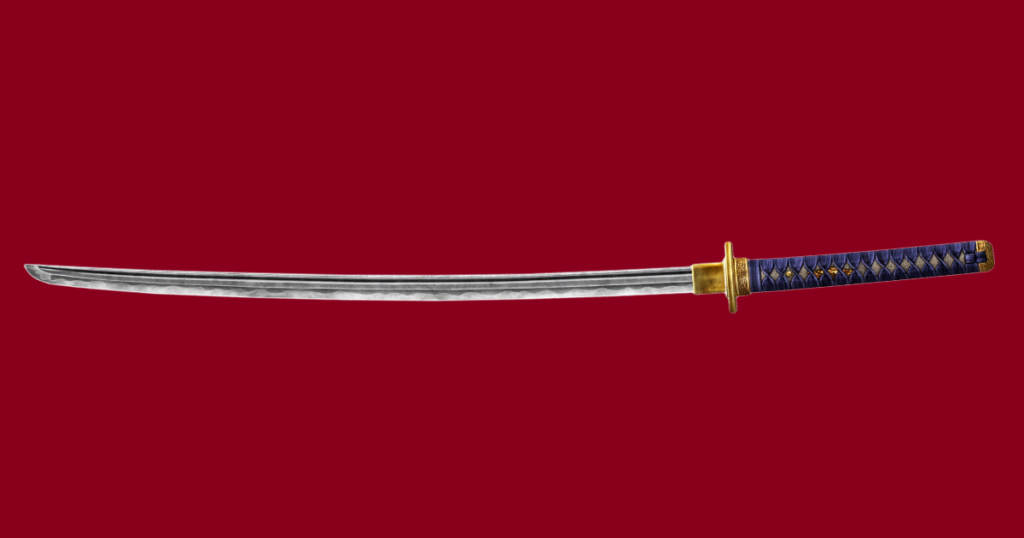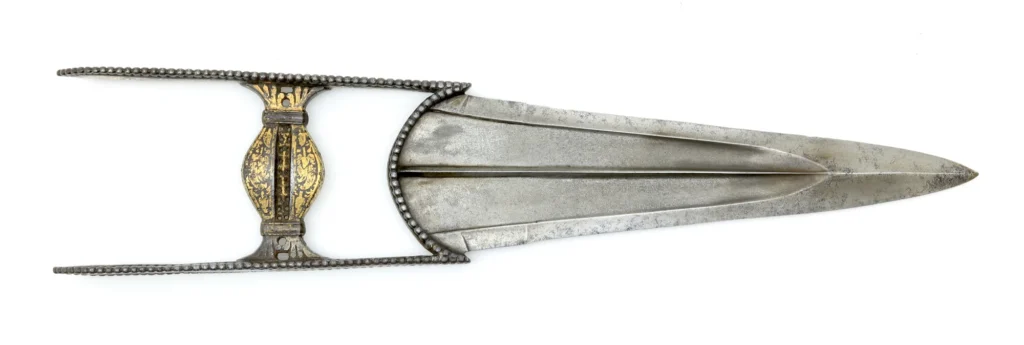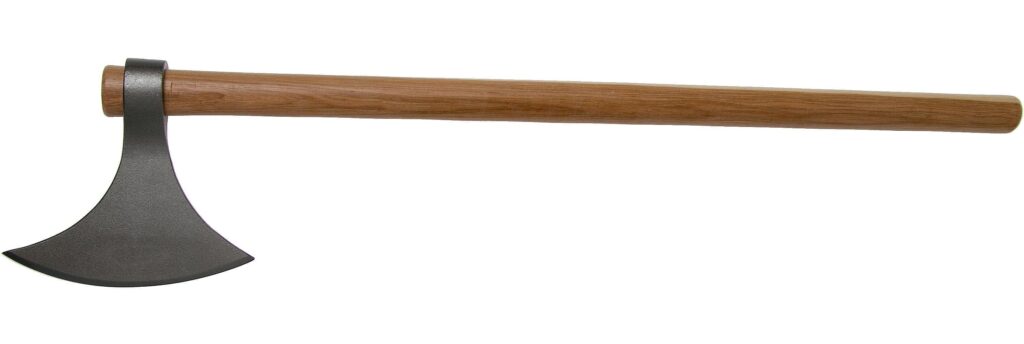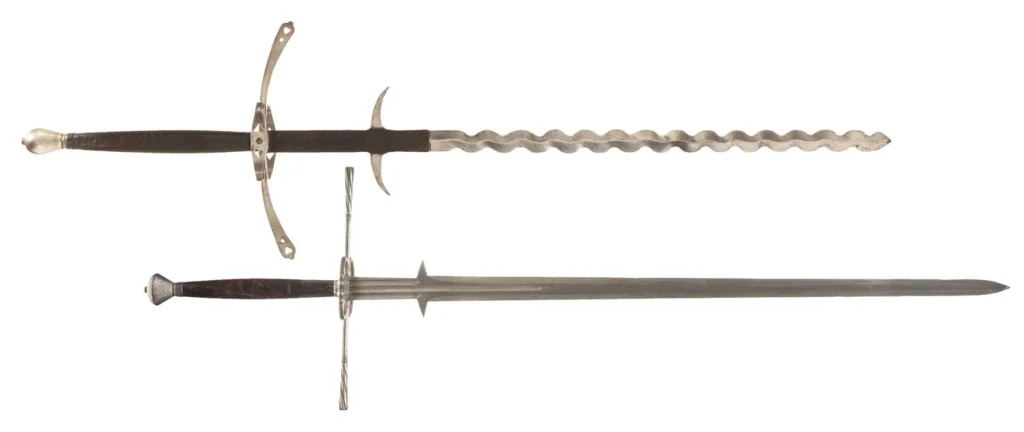
Throughout history, humans have managed to impress with their ability to kill stuff. Especially other humans.
Being an avid gamer and overall media consumer, I always loved to see how the art of warfare got warped in those industries.
One of the best examples are how enormous some cold weapons can be: no real human can really wield Cloud’s Buster Sword, isn’t it?
Still, we have examples of real weapons documented in history which were definitely big, and they are mostly remembered to be quite effective.
Today I decided to take a break from video games and to research the biggest weapons for each category. Needless to say, I cannot list each possible weapon category existing, so I went for the most common ones.
Biggest Katana – Ōdachi

Age: Kamakura Period (1185-1333)
Origin: Japan
Average Length: 148 cm (58 inches)
Biggest documented (in a real battle): 288 cm (113 inches)
The Ōdachi is the biggest Japanese sword ever existed. It was used mainly by mounted samurai to fend off infantry without being at risk of being pulled off from their horse, as well as samurai not skilled enough to use a Yumi, their bow. These swords were so big that it was impossible to keep them sheathed at the samurai’s side, rather they were kept unsheathed and strapped on their back.
While the biggest Ōdachi ever created, Haja-no-Ontachi (which means “Great evil-crushing blade”), reaches an overwhelming 465 cm (15.25 ft), it was never wielded in battle… or ever, really, therefore it does not count for this list.
Based on my research, the longest would be the Taro Tachi used by Magara Naotaka, which was massive nonetheless.
Biggest Warhammer – Luzerner Hämmer

Age: 15th – 17th Century
Origin: Switzerland
Average Length: 150-210 cm (59-83 Inches)
Biggest documented: 245 cm (96 inches)
The Lucerne Hammer (in English) was used by Swiss infantry soldiers and later adopted by other European countries. It is actually a mix of a war hammer and a pole weapon, but hey, it counts!
This weapon had several ways of being used, due to its design: it could pierce or smash the enemy armor with ease.
I could not find a documented battle in particular for the Lucerne Hammer, but there are several sources that mention as much as 245 cm.
Biggest Dagger – Kaṭāra (Katar)

Age: 14th Century – present.
Origin: India.
Average Length: 30-90 cm
Biggest documented: Unknown.
This is not your usual dagger. This is a beast of a weapon which is made for thrusting like a punch, although it can be also used for slashing.
The Katar’s blade had usually a triangular shape, although in South India they are wavy. They win the dagger competition for their average size, not only pure length, which can be rivalled by other daggers in the world.
Unfortunately, I could not find anything related to the longest Katar used in battle. If some of you have any information in that regard, please let me know!
Biggest Battle Axe – Dane Axe

Age: 9th – 16th Century
Origin: Scandinavia (presumably Denmark, considering the name)
Average Length: 90-120 cm (35-47 inches)
Biggest documented: 170cm (67 inches)
The Dane Axe is not the longest Axe, that being the Poleaxe, and to not fall again for the “a weapon attached to a long shaft” like the war hammer, I decided to opt for the longest Battle Axe instead.
The Dane Axe is the longest axe still considered a Battle Axe, and its use is as famous as it can get, thanks to the Vikings.
Although there is not a particular specimen that we can consider the biggest (aside of, possibly, this one), there are some that could reach 170cm (67 inches) without being considered poleaxes (which should be after 150cm).
Biggest Bow – Daikyū

Age: 3rd – 17th Century
Origin: Japan
Average Length: 212-245 cm (83-96 inches)
Biggest documented: 270cm (106 inches)
Before doing this research, I was sure that the English Longbow was going to be the longest. Well, turns out I was wrong. The Daikyū is a type of Yumi (Japanese asymmetric bow) used as far as 300 BCE and managed to stay relevant up until firearms were introduced in Japan. This weapon was used by the samurai, and the ancient and very difficult art of firing arrows from a Daikyū while on horseback is recognized world-wide.
According to some sources, the longest Daikyū documented can reach 270cm (106 inches), which is incredible.
Biggest Spear – Pike

Age: 14th – 17th century
Origin: Europe (most famous in Switzerland and Germany)
Average Length: 300-600 cm (118-236 inches)
Biggest documented: 750 cm (295 inches)
I am almost sad that the Sarissa, a Macedonian sub-category of the pike, did not make the list. It does share with the common Pike the average length, but this one has the longest documented specimen, reaching a ridiculous 7,5 m (295 inches).
Mostly used in Europe by infantry soldiers, the Pike was a defensive weapon, although there have been cases of units using it offensively. Due to its length and, therefore, lack of mobility, its use was limited in battle.
Biggest European Sword – Zweihander / Spadone / Montante

Age: 16th Century
Origin: Europe (most famous in Germany, Italy, Portugal, Spain)
Average Length: 170 cm (67 inches)
Biggest documented: 213 cm (84 inches)
Definitely one of the most famous weapons thanks, partly, to video games (like Dark Souls, for which I wrote an article about its lore), this massive sword was to be wielded with two hands (hence the German name, which means two-hander).
The German’s Doppelsöldner are the most known unit using this colossal sword, which was very useful to break pike formations. The biggest Zweihander ever documented belonged to the pirate and rebel leader Piers Gerlofs Donia, who was so strong and skilled with this weapon, that he could behead several men with one swing.
Conclusions
I know, I hear you all screaming different opinions and complaining about missing categories. I will later do another article to add more to this little list of ours.
I thought of the biggest throwing weapon, biggest fist weapon, war staff and others, but I believe that this is good enough to start!
For now, let’s all close our eyes and imagine to be the hero of our stories, swinging effortlessly oversized weapon with one hand and a smirk.
p.s.: If you liked this article, I also researched the real-world history of the Gunblade in this article. Have fun!
Pingback: Why Was Vincent Valentine in a Coffin?